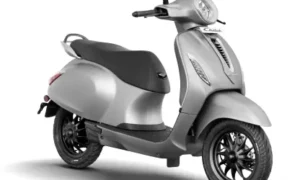In the dynamic sphere of digital art and branding, two pivotal processes stand out for their role in shaping visual identities: logo digitizing and graphic design. Though they share the common ground of visual creativity, their paths diverge in purpose, technique, and final execution. Understanding the nuanced differences between these processes is essential for businesses, designers, and marketers aiming to harness the full potential of their brand’s visual representation.
What is Graphic Design?
Graphic design is a multifaceted discipline that combines art, technology, and communication to convey messages visually. This field involves creating visual content using various elements like typography, imagery, color, and layout. Graphic designers employ their creative skills to communicate ideas and information effectively. The scope of graphic design is vast, ranging from traditional print media such as brochures and posters to digital platforms like websites and social media. With the aid of sophisticated software like Adobe Creative Suite, designers have the tools to craft compelling visuals that resonate with target audiences. Graphic design plays a pivotal role in shaping brand identities, enhancing user experiences, and conveying complex messages in a visually appealing manner.
Key Features of Graphic Design:
- Creativity and Concept Development: At its core, graphic design is about creating original visuals that convey specific messages or emotions.
- Versatility Across Media: Graphic design spans digital and physical mediums, from website layouts to print brochures.
- Technical Skills: Proficiency in design software like Adobe Creative Suite is crucial for modern graphic design.
What is Logo Digitizing?
Logo digitizing, while related to graphic design, is a specialized process tailored for the embroidery industry. It involves converting a logo or graphic design into a stitch file that embroidery machines can read. This process allows for the precise replication of logos on textiles, garments, and other products.
Key Features of Logo Digitizing:
- Technical Precision: Digitizing a logo for embroidery requires understanding how stitches will render different aspects of the design, including gradients, shadows, and fine details.
- Embroidery-Specific Software: Unlike general graphic design, logo digitizing uses specialized software designed to create stitch files compatible with embroidery machines.
- Consideration for Material: The digitizer must account for the fabric type and product shape, as these factors significantly influence the final appearance of the embroidered logo.
Distinguishing Between the Two
While both graphic design and logo digitizing for embroidery revolve around the creation and manipulation of visual elements, their purposes, tools, and outcomes distinctly separate them.
Purpose and Application
- Graphic Design is about creating visual content to communicate messages. It is versatile, covering a wide range of applications from digital marketing to print media.
- Logo Digitizing focuses specifically on preparing designs for embroidery, translating them into a format that embroidery machines can execute on textiles.
Tools and Skills
- Graphic Design utilizes a broad array of software, primarily Adobe Photoshop, Illustrator, and InDesign, requiring skills in layout, color theory, and typography.
- Logo Digitizing employs specialized software such as Wilcom or Pulse, with a skill set centered on understanding embroidery machinery, stitch types, and fabric behavior.
Final Output
- The graphic design process culminates in digital files or printed materials that visually communicate the intended message or brand identity.
- Logo Digitizing results in a machine-readable file that directs an embroidery machine on how to stitch a design onto a fabric, focusing on physical products like apparel or merchandise.
A Comprehensive Guide to Different Types of Embroidery Digitizing
Embroidery Logo Digitizing Fonts
Conclusion
While graphic design and logo digitizing share the commonality of crafting visual content, their paths diverge significantly in execution and purpose. Graphic design serves a broad spectrum of visual communication needs, creating everything from digital advertisements to print media. Logo digitizing, however, is a niche yet critical process for brands looking to showcase their identity through embroidered merchandise and apparel. Understanding these differences empowers businesses and creators to make informed decisions, ensuring that their visual content not only captures attention but also serves its intended purpose effectively.








































